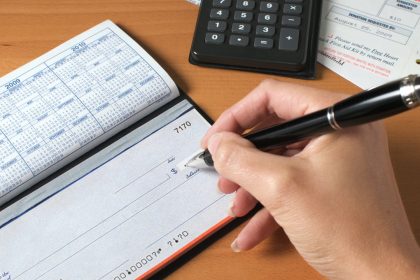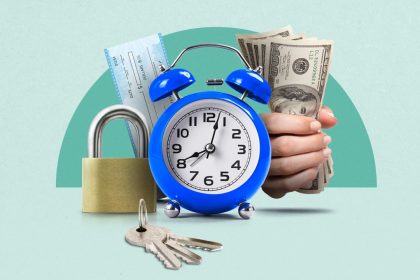10’000 Hours/Getty Images
Key takeaways
- You can log into the Federal Student Aid website to identify what type of loans you have.
- Federal student loans are distributed by the federal government and are serviced by lenders assigned by the Department of Education.
- If you complete the Free Application for Federal Student Aid (FAFSA), you’re also applying for federal student loans since some of them are based on need.
- Private student loans are offered by banks, credit unions and online lenders.
Each year, between 30 and 40 percent of undergraduate students take out federal student loans to help pay for school. Many others turn to private loans or a mix of both. If you’re unsure whether your student loans are federal or private, there are a few ways to check.
How to find out what type of loan you have
Try logging into the Federal Student Aid website using your FSA ID to see a list of all federal student loans in your name. On your account dashboard, you can find “My Loan Servicers” or check the National Student Loan Program System. If you’re making payments to a lender that isn’t listed, your loan m
Current federal student loan servicers
If you’re unsure if your loan is federal or private, log into your lender’s account — or the place you make your monthly payments. The current federal student loan servicers are:
There’s also a chance that you originally had federal student loans through a servicer that no longer works with the federal government. In that case, your loan was moved to a different servicer on this list. Many loans switch hands throughout their lifetimes, so it’s not uncommon to have a different servicer now than when you graduated.
How to tell if your loan is federal
If you’re still unsure how to tell if your loan is federal, you can check whether it’s labeled “direct” or check your credit report.
It says “Direct”
- All federal loans will have “Direct” in their names, like “Direct Subsidized Loan,” “Direct PLUS Loan” or “Direct Consolidation Loan,” for example.
- For PLUS Loans, you might see specific titles, like “Parent PLUS Loans.” Older student loan names include Perkins, FFEL, and Stafford.
Your credit report says so
- When you check your credit report, it’ll list the lender of your student loans. It might say the Department of Education or the lender who manages your loan, which can be any of the ones we listed above.
- If you have a lender that manages both federal and private student loans — like Nelnet — you may have to call to see which type of loans you have.
Bankrate tip
You can get free weekly copies of your credit reports from AnnualCreditReport.com.
Federal vs. private student loans
| Federal | Private | |
|---|---|---|
| Interest rates | Fixed, set every year by Congress | Fixed or variable, set by each lender |
| When you start paying | After a six month grace period once you graduate; when you drop below half-time enrollment | While still in school; some lenders let you defer until after you graduate |
| Credit check | Not for most loans | Yes, requirements vary by institution |
| Deferment, forbearance, forgiveness | Yes, most let you pause payments if you’re facing hardship and can’t repay; only federal loans are eligible for forgiveness | Some have hardship plans but they’re offered on a case-by-case basis; can’t get private loans forgiven |
| Repayment plans | Several options, including a few based on income | Varies by institution but most set your payment by how much you borrowed not your current income |
Federal student loans
Federal student loans are distributed by the federal government and assigned to a lender through the Department of Education.
When you complete your FAFSA, you’re also applying for need-based federal student loans. You’re given an FSA ID and you can log in to check on all your financial aid, including federal student loans. You can do this at any time throughout school and after you graduate.
Once you graduate, your loans are automatically enrolled in the Standard Repayment Plan. You can change your payment plan at any time to one that best fits your needs. For instance, you can enroll in an income driven repayment plan where your loan payments are based on a percentage of your discretionary income and household size.
Private student loans
Private student loans come from private institutions, like banks, credit unions and online lenders.
You can take out private student loans any time during school, but the vast majority of lenders require a credit check to borrow. If you don’t have a strong enough credit score you may need to ask a relative with good credit to be a co-signer. Once you graduate, both you and your co-signer become responsible for your loans.
Interest rates tend to be higher for private loans compared to federal, but private lenders offer variable and fixed interest rates. Repayment terms for private loans are shorter — ranging from five to fifteen years — which means you’ll have larger monthly payments.
Bottom line
If you’re unsure whether you have federal student loans, start by logging into StudentAid.gov with your FSA ID. Once you login, you’ll see a list of any federal loans you’re responsible for paying. Another way to tell if you have federal loans or private loans is to check your credit reports to see if it says your loans are owned by ED.
Read the full article here





